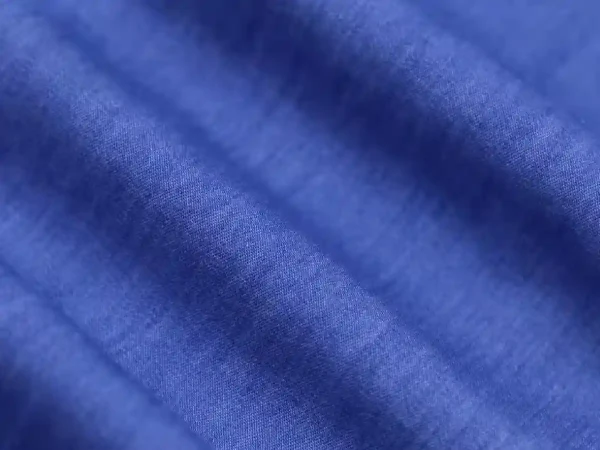Tencel denim fabric offers an array of advantages, including sustainability, softness, breathability, moisture-wicking properties, and durability. Its stylish designs and versatile applications make it a preferred choice in the fashion industry, while its use in home and interior design presents an eco-friendly option for upholstery, furnishings, curtains, and drapery.
Let’s learn more about tencel denim from the bellowing aspects:
- What is tencel denim fabric
- Types and variations of denim fabric
- What sets Tencel Denim Fabric Apart?
- Practical Applications of Tencel Denim Fabric
- Care and Maintenance of Tencel Denim Fabric
What Is Tencel Denim Fabric?
Tencel denim fabric, also known as tela de mezclilla de Tencel, is a denim fabric made of a blend of Tencel fibers and cotton. Tencel, also known as Lyocell, is a sustainable and environmentally friendly fiber, derived from wood pulp. It is known for its softness, breathability, and environmental protection. Tencel denim fabric combines the classic appeal of denim with the benefits of Tencel fiber, making it a popular choice in the fashion world.
Types and Variations of Denim Fabric
Denim, or tela de mezclilla, is a sturdy cotton fabric that is used to make jeans, jackets, and other durable clothing items. It is characterized by its diagonal twill weave and indigo dye, which gives denim its distinctive blue color. Denim is known for its durability and versatility, making it a timeless favorite in the fashion industry.
- Traditional denim fabric (mezclilla clásica)
Traditional denim fabric that is mainly made of cotton. It is known for its ruggedness, stiffness, and durability. Traditional denim can vary in weight and weave. The heavier weights are used for workwear, and the lighter weights for casual garments.
- Tencel denim fabric (tela de mezclilla de Tencel)
Tencel denim is a blended fabric of Tencel fiber and cotton. Tencel fiber is made from wood pulp When blended with cotton, Tencel adds extra comfort to denim fabric, making it softer and more breathable than traditional denim. This blending method also enhances the environmental friendliness of the fabric, as Tencel fiber is a sustainable production method.

- Stretch denim fabric (tela de mezclilla elástica)
Elastic denim is a type of denim that incorporates elastic or spandex fibers into the fabric. The addition of elastic fibers provides flexibility and better shape retention, allowing the fabric to stretch and restore its original shape. Stretch denim fabric is widely popular for its comfort and snug fit, making it a good choice for tight-fitting jeans and clothing.
- Selvedge denim fabric (tela de mezclilla con orillo)
Selvage denim fabric well known as selvage denim is characterized by its tight woven and self-finished edges. It is produced by traditional shuttle looms, resulting in a narrower width. Selvage denim is known for its superior quality and durability, as well as its vintage aesthetic. It is often seen as a premium option in the denim world.
What Sets Tencel Denim Fabric Apart?
- Introduction to Tencel Fabric (Introducción a la tela de Tencel)
Tencel fabric, also known as lyocell, is a fiber derived from cellulose of wood pulp. It’s produced through a closed-loop manufacturing process, which means the solvents used in production can be recycled and reused, thus, making it a more sustainable choice compared to other fabrics. Tencel fabric is known for its soft, breathable, and moisture-wicking properties.
- Benefits of Tencel in Denim Fabric
Sustainable production and eco-friendliness (producción sostenible y respetuosa con el medio ambiente)
One of the key benefits of Tencel denim fabric is its sustainable production process. Tencel fibers are derived from renewable wood sources, such as eucalyptus trees, which are grown in responsibly managed forests. The fibers are produced using a closed-loop system that minimizes water and energy consumption, making it a more environmentally friendly choice compared to conventional denim fabrics. By choosing Tencel denim, consumers can support sustainable fashion and reduce their carbon footprint.
- Enhanced softness and breathability (suavidad y transpirabilidad mejoradas)
Tencel fibers are very soft and look luxurious. When blended with cotton to make Tencel denim, the fabric is very comfortable to wear. The natural moisture-wicking properties also ensure it remains cool and breathable, allowing it for better air circulation, it reducing the chance of sweat and odor build-up.
- Moisture absorption and antimicrobial properties (absorción de humedad y propiedades antimicrobianas)
Tencel fibers have excellent moisture absorption capabilities, enabling Tencel denim fabrics to wick moisture away from the skin efficiently. In wet conditions, it helps keep the wearer dry and comfortable. In addition, Tencel fibers have natural antimicrobial properties that inhibit bacterial growth and reduce the risk of odor development. Made with Tencel denim to keep you fresh and odor-free all day long.
- Durability and resistance to pilling (durabilidad y resistencia a la formación de pelusas)
Tencel denim not only has a soft and lightweight texture but also its durability is very good. The blending of Tencel fiber and cotton enhances the strength and wear resistance of the fabric. Tencel fibers are not prone to pilling, which refers to the formation of small fiber balls on the surface of the fabric. This ensures that Tencel denim maintains a smooth and stylish appearance even after multiple washes and wear.
Practical Applications of Tencel Denim Fabric
- Tencel Denim in the Fashion Industry
Stylish designs and versatile applications (diseños elegantes y aplicaciones versátiles)
Tencel denim offers possibilities of design. It can be treated and finished to achieve a variety of looks, from classic to modern chic. The fabric’s soft, flowy drape makes it ideal for silhouetted garments. Be it dresses, skirts, tops, or jackets, Tencel denim can be used to create elegant and stylish designs, catering to different styles and preferences
Tencel denim jeans for everyday wear (vaqueros de tela de mezclilla de Tencel para uso diario)
Tencel denim is particularly popular in jeans. The fabric’s blend of comfort, durability, and sustainability makes it an excellent choice for everyday wear. Tencel denim jeans offer a superior fit, due to their ability to stretch and mold to the body. Additionally, the fabric’s breathable nature and moisture-wicking properties ensure that Tencel denim jeans remain comfortable throughout the day.
- Home and Interior Design
Tencel denim fabric is not limited to the fashion world; it has also found its way into the home and interior space, offering a unique and eco-friendly option for upholstery, furniture, and drapes.
Tencel denim upholstery and furnishings (tapicería y mobiliario de tela de mezclilla de Tencel)
Tencel denim fabric can be used to upholster furniture pieces, such as sofas, chairs, and ottomans. Its softness and durability make it an excellent choice for creating comfortable and long-lasting seating surfaces. Tencel denim upholstery can add a touch of sophistication and style to any living room or bedroom, while also offering the added benefit of being environmentally friendly.
Tencel denim curtains and drapes (cortinas y estores de tela de mezclilla de Tencel)
For those who hope to incorporate denim into interior decoration, making curtains is a good example. Its drapability and ability to regulate humidity make it suitable for various rooms, including bedrooms, living rooms, and restaurants. Tencel denim curtains can create an elegant and modern atmosphere while providing privacy and light control.
Care and Maintenance of Tencel Denim Fabric
- Tips for washing and preserving Tencel denim garments (consejos para lavar y preservar prendas de tela de mezclilla de Tencel)
To prolong the lifespan of Tencel denim garments, it is important to follow proper care instructions. Machine wash the fabric using a gentle cycle with cold water. Use a mild detergent, and avoid using bleach or fabric softeners. It is recommended to air dry Tencel denim or use a low-heat setting if using a dryer. Ironing should be done at a medium temperature.
- Best practices to maintain the quality of Tencel denim upholstery (mejores prácticas para mantener la calidad de la tapicería de tela de mezclilla de Tencel)
For Tencel denim upholstery, regular vacuuming or gentle brushing can help remove any dust or debris. In case of spills or stains, attend to them promptly by blotting the affected area with a clean cloth and mild detergent solution. Avoid using harsh chemicals or rubbing vigorously, as this can damage the fabric. Consult professional upholstery cleaning services for deep cleaning if necessary.
Conclusion
By choosing Tencel denim products, consumers can make a positive impact on the environment while enjoying the comfort and style that this fabric provides. Embracing sustainable fashion choices, such as Tencel denim, allows individuals to contribute to a greener and more ethical fashion industry.





